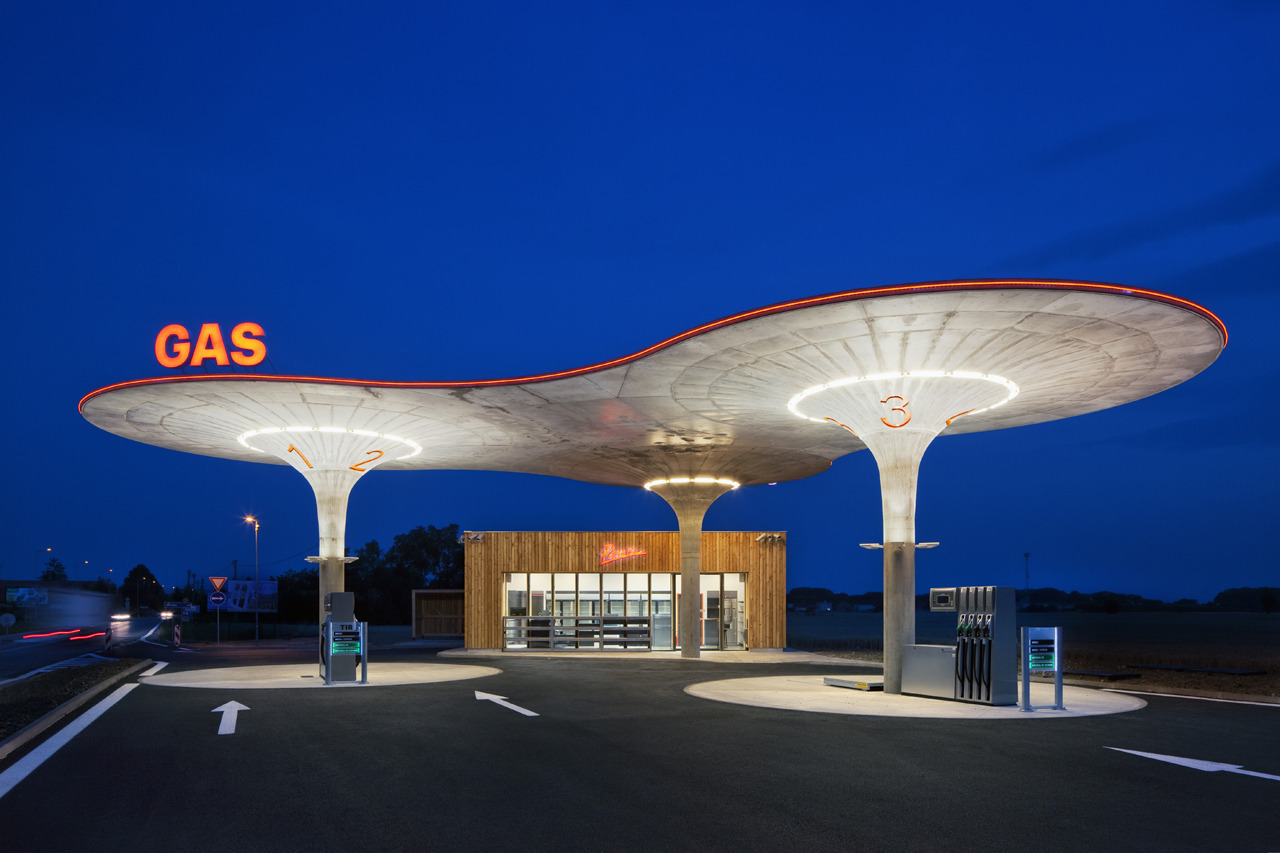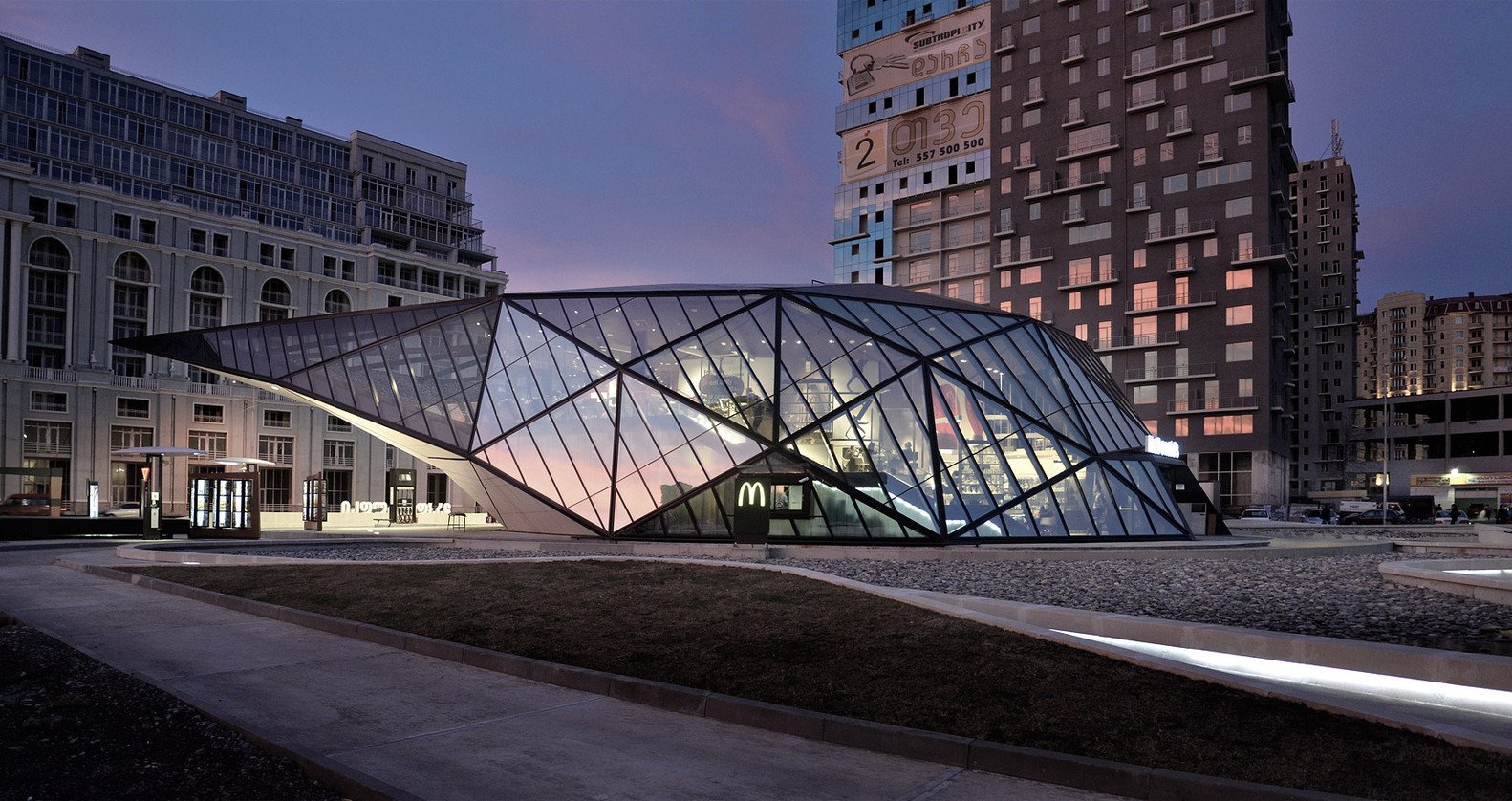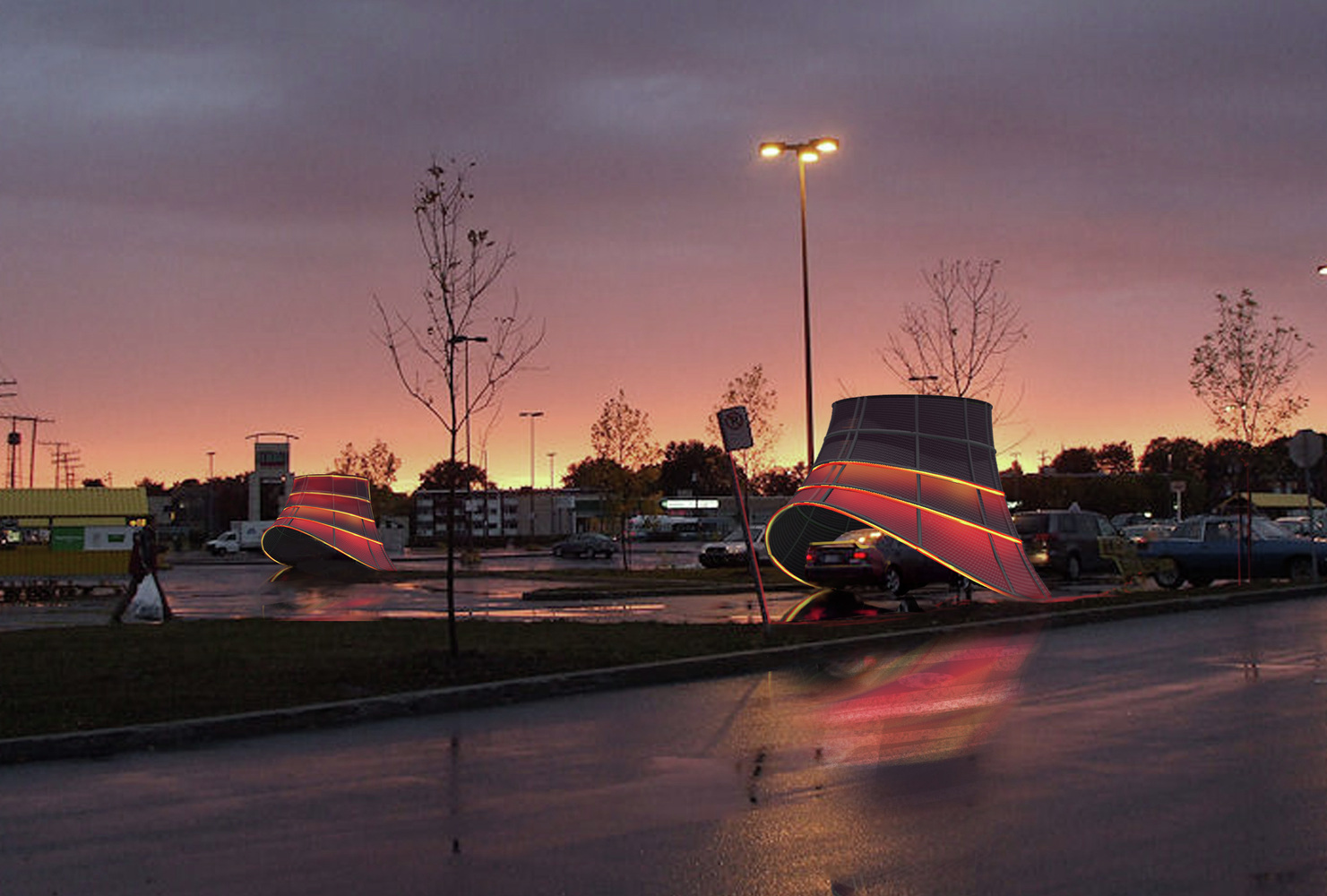
For decades, the gas station has been a staple of both urban and rural landscapes. As the 20th century saw the democratization of automobiles, the gas station became arguably one of the most generic, universal architectural typologies. Today in the USA alone, there are 130,000 gas stations serving 268 million cars. However, as populations move to condensed, urban areas with ever-improving public transit systems, and as the internal combustion engine evolves into electric alternatives, it is time to either redesign or retire the gas station.
The gas station typology is already in decline. In 2016, there were an estimated 116,000 gas stations in operation across Europe. By the end of 2017, this had fallen to 77,000. In the UK alone, the number of gas stations has fallen by 80% since 1970, despite the usage of petrol and diesel rising by 75%. A July 2019 study by the BCG concluded that “up to 80% of the fuel-retail network as currently constituted may be unprofitable in about 15 years.” There are several reasons for this.
On one hand, the ongoing global population shift from rural to urban areas has seen citizens swapping private transport with ever-evolving public alternatives. In late 2018, for example, Luxembourg became the first country to offer free public transport to all citizens, while only weeks later, Paris made their public transport free for all children under 11, among other radical concessions. As cities adopt progressive policies towards public transport and invest in new systems such as recent examples in Sydney and Gothenburg, the decline of the gas station will continue to accelerate.

Meanwhile, even the private transport industry is driving the gas station into irrelevance. In 2018, the global electric car fleet surpassed the 5 million mark, a staggering increase of 2 million from 2017. While the electric car as it exists today still relies on a public network of electric charging points, many located at gas stations, the current 200-300 mile range of cars such as Tesla are only set to rise. As Elon Musk demonstrated with his Solar City venture, a future scenario where electric cars drive by day, and charge at home by night, will all but eliminate the need for roadside gas stations.
The technological revolution that is leading to long-range electric vehicles may also radically reduce the demand for private vehicles. In 2014, the MIT Senseable City Lab conducted the HubCab experiment, where 150 million taxi journeys across New York City were mapped to identify commuter patterns, with the goal of developing an efficient car share system. The Lab estimated that improved transport-sharing technology could potentially reduce the number of car journeys by 40%, thus cutting congestion and emissions, and saving people time and money.

If cities embraced the concept of shared mobility, four out of every five private vehicles could be taken off city streets, leading to faster journey times, less noise and cleaner air. Given that the average city car is idle for 95%-99% of the day, new sites once occupied by car parks would become available for development. With the success of car-sharing companies such as ZipCar and DriveNow, the supply/demand ratio for car ownership will render gas stations further unprofitable.
So is there are a future for the gas station? The question has been put to architects several times as of late. In 2015, Combo Competitions ran a competition titled “Rethink Refueling”, asking participants to reimagine the ubiquitous filling station that could be easily recognized regardless of its location, while maintaining visibility. Four years later, GoArchitect has followed suit, with their current design competition titled “Gas Station of the Future” calling for ideas to be submitted by December 1st 2019.





